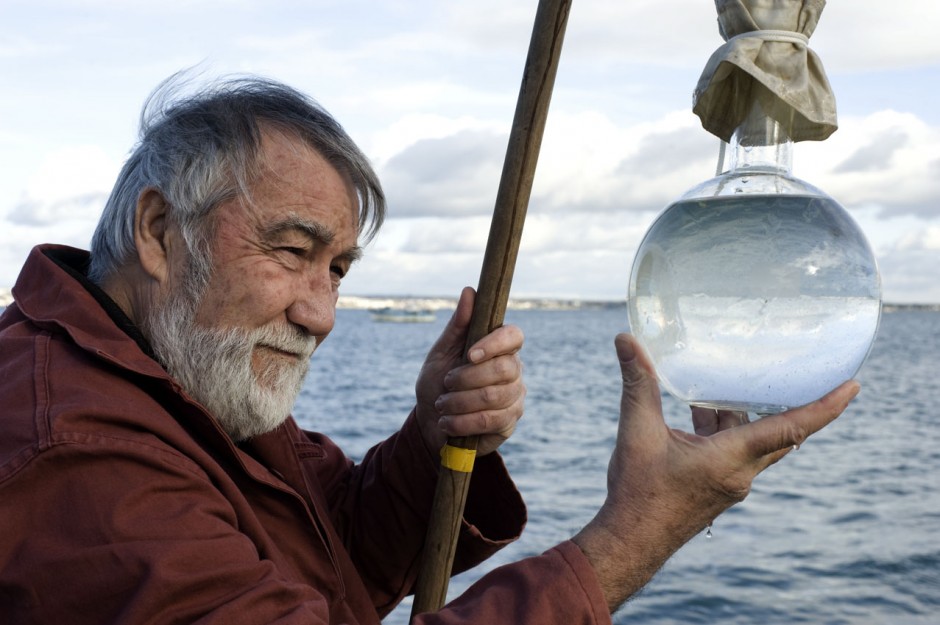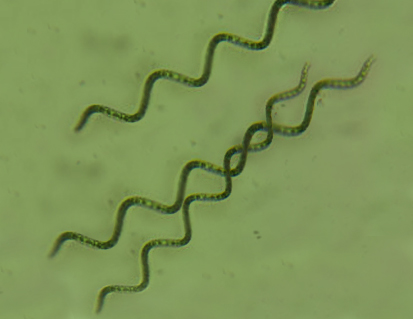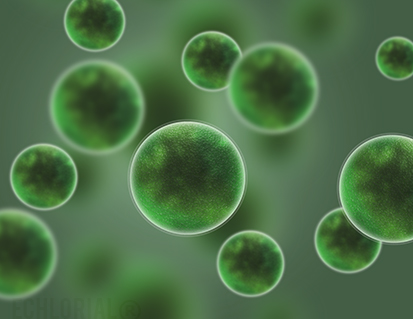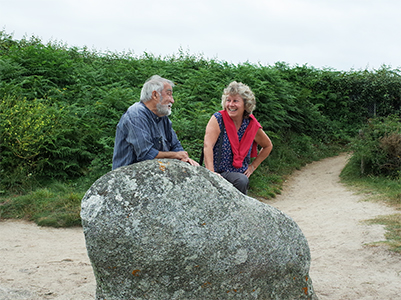On the occasion of the COP21 we spoke to a friend, Pierre Mollo, a teacher-researcher and one of the world’s leading plankton specialists. In this interview, he shares his experience and the passion of a lifetime.
Testimony of Pierre Mollo, plankton specialist for the Nicolas Hulot Foundation
Pierre, what is phytoplankton?

The word plankton comes from the ancient Greek meaning “wandering”. Plankton is anything that is carried by currents. It’s made up of all the micro-organisms that live in water, whether fresh, brackish or salty.
The micro-organisms that make up plankton are animals (zooplankton) or plants (phytoplankton). Phytoplankton refers to a family of microscopic algae, including cyanobacteria. Microalgae consist of a single cell in which all the functions necessary for life and reproduction take place. There are several tens of thousands of species of microalgae in the seas and oceans!
Today, only a hundred or so algae are studied, and only a few are cultivated. The best known are diatoms, chlorophyceae and dinoflagellates. Microalgae are increasingly attracting the interest of industrialists for the production of biofuels.
They are also used for animal feed, notably in aquaculture. In recent years, they have also found an interesting outlet in human food.
What are the nutritional qualities of phytoplankton?
Phytoplankton is the staple food of most fish, and its nutritional qualities are well known. It is thanks to phytoplankton, rich in omega-3s, that the small fish (sardines, anchovies, mackerel, etc.) that concentrate it enrich our diet with these healthy fatty acids.
Today, only three microalgae are authorized for human consumption. Spirulina, the cynanobacterium Athrospira platensis, has been authorized in Europe for almost 40 years. Odontella aurita, a diatom, has been authorized as a food ingredient for almost 15 years. Since 2004, France has recognized it as a food and dietary supplement, Chlorella vulgaris, a member of the chlorophyceae family.
While all micro-algae share a number of common characteristics, the different species have their own specific nutritional characteristics:
Microalgae all contain high levels of protein, as well as pigments (carotenoids, phycocyanins…) that give them an antioxidant activity capable of combating cell aging. They are also prized for their carotenoid content (beta-carotene and lutein), whose role in preventing vision loss has now been demonstrated.
They also contain chlorophyll, with proven purifying and blood-oxygenating properties. Microalgae also help maintain the acid-base balance that promotes the body’s well-being.
Spirulina is distinguished by its protein and antioxidant content (chlorophylls, phycocyanin), both quantitatively and qualitatively (all essential amino acids are represented). Spirulina cells have no cellulose wall, so they are rapidly absorbed. Since its first uses, Spirulina has been used to combat malnutrition. It is widely appreciated by athletes for its doping properties and rapid assimilation.
Chlorella is distinguished by its protein content (all amino acids are present), vitamins, antioxidants and trace elements. It contains numerous B vitamins, notably vitamin B12. It also contains iron and calcium. Studies have shown that these components, vitamins B12 and trace elements, are bio-absorbed.
The detoxifying properties of Chlorella have helped to raise its profile. Chlorella is also highly appreciated for its ability to stimulate the body’s natural defenses. Its anti-inflammatory and anti-tumor properties, as well as its benefits for cardiovascular health, are becoming better known.
Odontella is renowned not only for its protein content, but also for its excellent lipid content, notably in omega-3 (EPA and DHA).
It should be noted that the nutritional profiles of microalgae, like those of all living organisms, vary according to their growth stage and culture conditions.
Is there any danger in eating micro-algae?
In Europe, only three micro-algae are authorized for human consumption, and some are not used because of their possible toxicity.
The use of new algae is currently being studied. The aim is to verify their use as food ingredients. They must not present any intrinsic or associated risks due to the presence of toxins.
Seaweed cultivated under poorly controlled conditions may be either polluted (heavy metals, pesticides, etc.) or carry toxins (e.g. micro-cystins, which are highly damaging to the liver). It is very important to consume only seaweed grown under conditions that guarantee its nutritional quality and purity.
Tell us about the history of plankton!
Phytoplankton has been around for three billion years, and it’s estimated that its use goes back thousands of years! In Europe, it was against a backdrop of food shortages that researchers began to take an interest in the value of microscopic algae as food, back in 1940: the high protein content of microalgae could help alleviate the world’s malnutrition problems. The researchers discovered that Chadians had been consuming dried spirulina for many decades. They also show that phytoplankton was consumed by the Aztecs! The first industrial chlorella cultivation plant was built in Japan in the 1960s.
What do you think the future holds for microalgae in our diet?
In Europe, we’re just beginning to discover Organic Chlorellathe Japanese have been benefiting from its virtues for almost 60 years. To this day, they remain the world’s biggest consumers of Chlorella consumers in the world.
Microalgae are not consumed in the same way in all parts of the world. In Europe, where some microalgae have recently been recognized as foodstuffs, consumption of microalgae remains almost confidential. They are mainly consumed as dietary supplements.
Proteins and omega-3 polyunsaturated fatty acids are the main nutrients promoted in this type of product. The development of phytoplankton-based health foods has also seen strong growth in recent years.
In Europe, micro-algae have yet to enter the kitchen, although more and more Michelin-starred chefs are featuring them in their gastronomic compositions. Spirulina and Chlorella have subtle tastes that are appreciated by gourmets.
In the Orient, microalgae have been an integral part of the diet for many years.
Why is plankton so important for our planet, for us?
Plankton is essential to life. It is the first link in the food chain and provides us with 50% of the oxygen in our atmosphere. A common natural heritage dating back more than 3.5 billion years, plankton has survived every cataclysm. Animal as well as vegetable, it brings together countless aquatic organisms roaming the waters of the blue planet. It is the intimate, invisible part of the planet’s greatest biodiversity.
Basically, plankton forms the basis of the food chain for all marine organisms. Through photosynthesis, plant plankton provides most of the oxygen we breathe. What’s more, they absorb more than half the carbon dioxide in the atmosphere, making them an essential element in the fight against global warming. The future of the oceans depends on our ability to respect them!
That’s what I’m hoping for from COP21: it’s the expression of a real global political determination, which will have to be translated rapidly and sustainably into concrete action!
With Antoine de Saint-Exupéry, we know that “what is essential is invisible to the eye”. We urgently need to turn our gaze to the invisible in order to see the ocean in a new light.
Over the last few decades, greenhouse gas emissions into the atmosphere have caused temperatures to rise, with immediate repercussions for the oceans. A 1°C warming of the seas may seem insignificant, but it has taken place at an unprecedented rate, and has led to major changes in ecosystems.
When waters warm up, biodiversity is affected. Plankton will obviously adapt to this new situation, but these changes will inevitably have consequences for the entire environment.
The direct impacts of rising sea levels include submergence of coastal land, coastal erosion and increased flooding. The corollary is increased salinity in estuaries and coastal water tables. This threatens the biotopes of tropical deltas, where mangroves are located. Their submersion could lead to a loss of planktonic biodiversity.
Basically, plankton forms the basis of the food chain for all marine organisms. Through photosynthesis, plant plankton provide most of the oxygen we breathe. What’s more, they absorb more than half the carbon dioxide in the atmosphere, making them a vital element in the fight against global warming.
The future of the oceans is not written, it will be what we make of it. Observing microscopic life means managing randomness. To do this, we need a fertile imagination and dreams: for it is from these that great projects are born. Younger generations expect us to be passers-by for “better living for all”.
Vital for present and future populations, this “little people of the sea” should be protected in a manner commensurate with its importance. Plankton could be declared humanity’s heritage, and we could imagine a global governance body charged with maintaining an optimal relationship between man and nature.
To achieve this, we need to raise public awareness, and we welcome all initiatives to pass on this knowledge to as many people as possible, especially young people.
Preserving the diversity of today’s plankton means saving the breathing of tomorrow’s oceans, contributing to the balance of gas exchange between sea and atmosphere, and preparing food resources for humanity.
To find out more about Pierre Mollo and the Plankton Observatory



